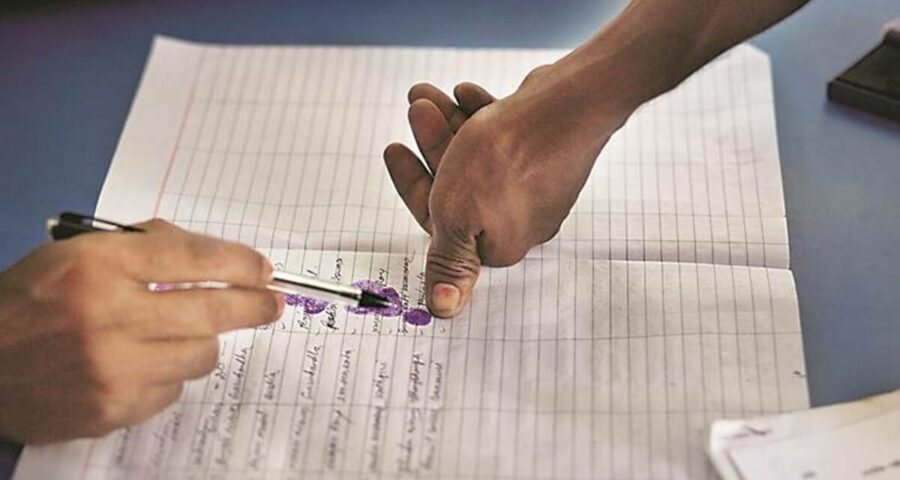It would provide up-to-date data to calibrate reservation, but threaten social justice claims of a caste-conscious compensatory discrimination regime.
In the recently-concluded Monsoon Session, the Indian Parliament passed the 127th Constitution Amendment Bill, 2021, which overrides the Supreme Court’s interpretation of the 102nd Constitutional Amendment. The Court’s judgment in the Maratha case had concluded that the 102nd Constitution Amendment curtailed the state government’s power to identify backward classes. The Union government’s course correction allowed the ruling BJP to congratulate itself for its record on OBC rights. But two challenges risk rendering this proclaimed progress redundant.
First, the 50 per cent limit on caste-based quotas, propounded by the judiciary, imposes a serious limitation on states’ power to expand the composition of backward class beneficiaries. In most states, the existing quotas for SC, ST, OBC and SBC already breach this benchmark. The government’s inertia regarding the expansion of the quotas raises questions about its pro-OBC credentials, as OBC reservations remain under-implemented in central services (where the representation of the OBCs was below 22 per cent in 2016), and unimplemented in many central universities (where 47 per cent of the posts reserved for OBCs were vacant in 2017).
The erosion of the public sector has resulted in a steady decrease in the number of jobs occupied by Dalits in the reservations framework. For instance, the number of civil service candidates shortlisted by the UPSC dropped by almost 40 per cent between 2014 and 2018, from 1,236 to 759. This evolution was primarily due to old trends like the rise of vacancies and the privatisation of Public Sectors Undertakings. As a result, between 2011-12 and 2017-18, due to fall in employment of 2.2 lakh jobs in Central Public Sector Enterprises, the reduction in employment of SCs amounted to 33,000 jobs.

While the professed aim of the 127th Constitution Amendment may be to balance these trends, it is bound to be frustrated if state governments are not empowered to breach the 50 per cent limit.
Secondly, this anxiety is further compounded by the BJP’s reluctance to enumerate OBCs in the Caste Census despite the overwhelming support for the same amongst its own OBC members and opposition parties. This reluctance will exacerbate the post-colonial contradiction between caste-blind socio-economic demographic analysis and a caste-conscious compensatory discrimination regime. The political rise of the backward classes represented a moment of history. However, their claims to a fair share of state power have been mired in various challenges. The First Backward Class Commission as well as Second Backward Class Commission made recommendations in a context where their access to credible and up-to-date caste census data was not ensured.
The census data would provide up-to-date evidence that would help analyse the accomplishments as well as the limitations of reservation policies. It would showcase the magnitude of the gap between economic and social capital acquisition within and between the general category as well as the reserved sections. The census would also be instrumental in revising the benchmark for social, economic and educational backwardness. The absence of information about the general category’s material attainments and accumulation does not permit a measure of social disadvantage. This is particularly problematic in today’s India where social progress, achievement and mobility are determined even more than before by access to corporate capital and English proficiency. These benchmarks, presently focused on analysis of a group’s social indicators relative to SCs, need to be calibrated to measure relative backwardness in comparison to the “general category”.
The caste census would also provide much-needed rigor to the findings and recommendations of Union and state-level backward caste commissions. This is imperative because their recommendations are often declared “unreasonable” and “arbitrary” by the judiciary – like in the case of Justice Gaikwad Commission that proposed granting of SEBC quota to the Maratha community. The Commission’s findings on lack of educational attainments amongst Marathas were clouded by the fact that Marathas were socially dominant. This decadal data can illuminate the precise dynamics of social and market-driven processes of converting caste-based social capital to economic and in turn educational and professional progress. It would also provide insights on emerging axis of marginalization and backwardness in the privatizing economy.
Last but not least, a caste census would also facilitate compliance with recent court decisions. The Supreme Court, in Chebrolu L Prasad v State of AP (2020), directed the Centre to periodically revise the list of reservation beneficiaries based on sound sociological evidence. However, the National and State Backward Class Commissions lack access to universalised data and field research on various dimensions of backwardness. Another 2020 decision, Davinder Singh v State of Punjab has opened the question of sub-classification within the SC category, thus raising the need for credible data on internal differentiation and sophisticated educational and occupational profiles.
It is precisely because there is so much at stake that the caste census may not see the light of the day under a government in which elite groups are over-represented.
Dhawan is a student of National Law School of India University, Bangalore and Jaffrelot is senior research fellow at CERI-Sciences Po/CNRS, Paris, professor of Indian Politics and Sociology at King’s India Institute, London
Source: Read Full Article


